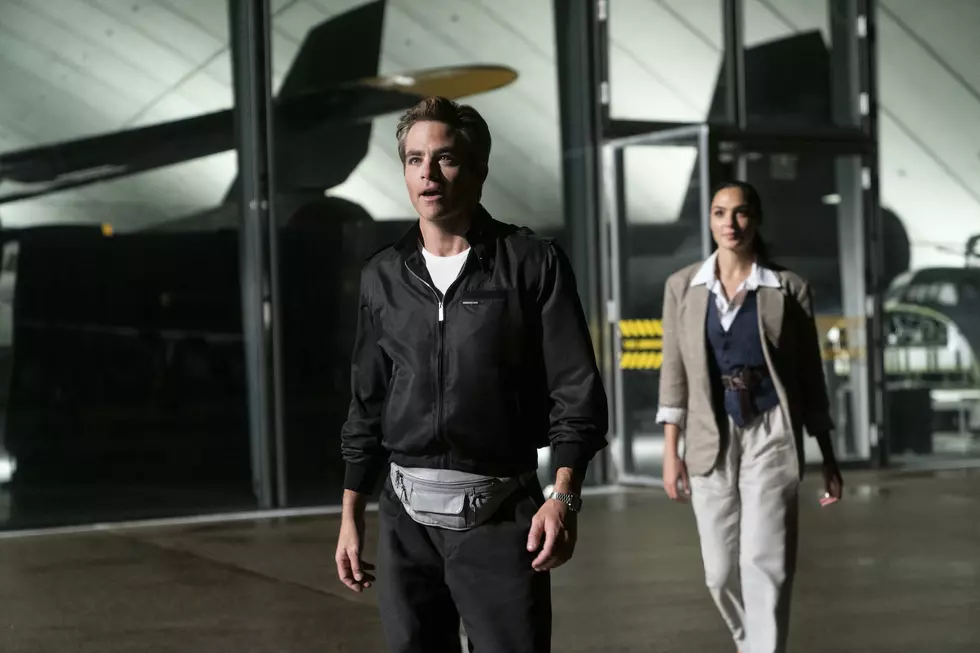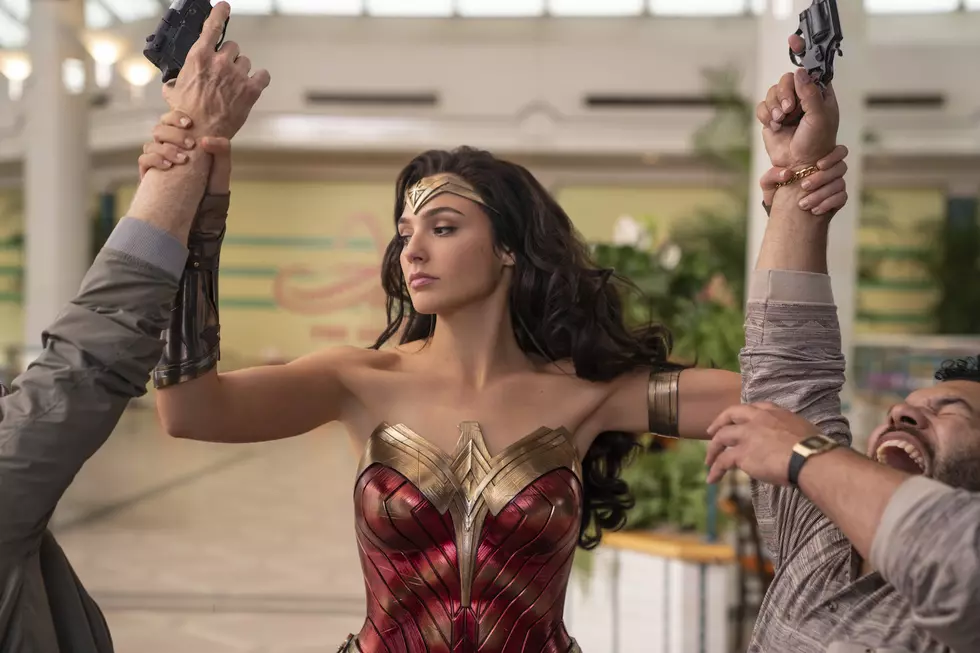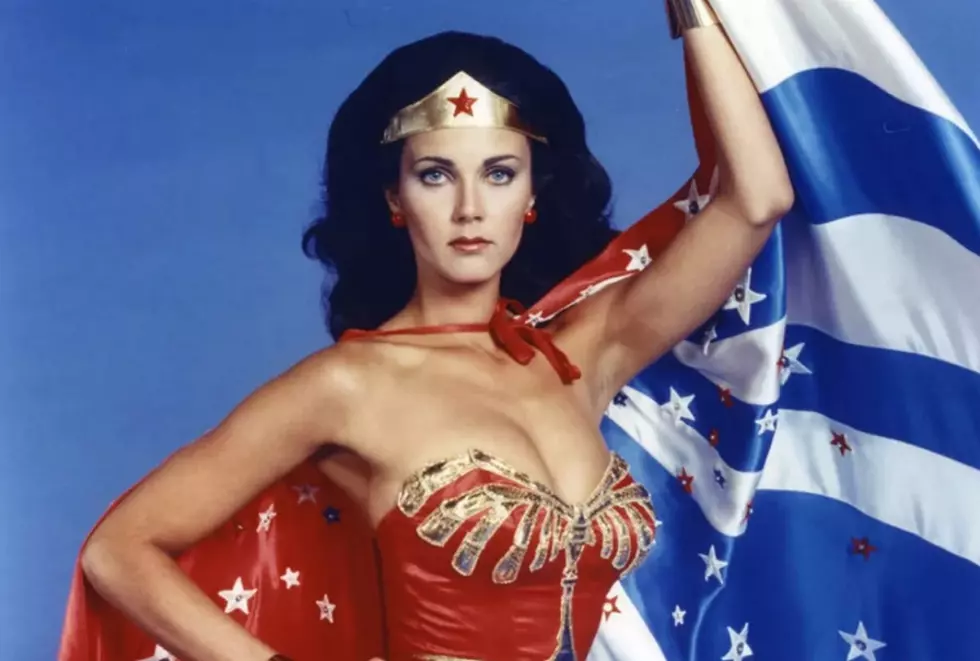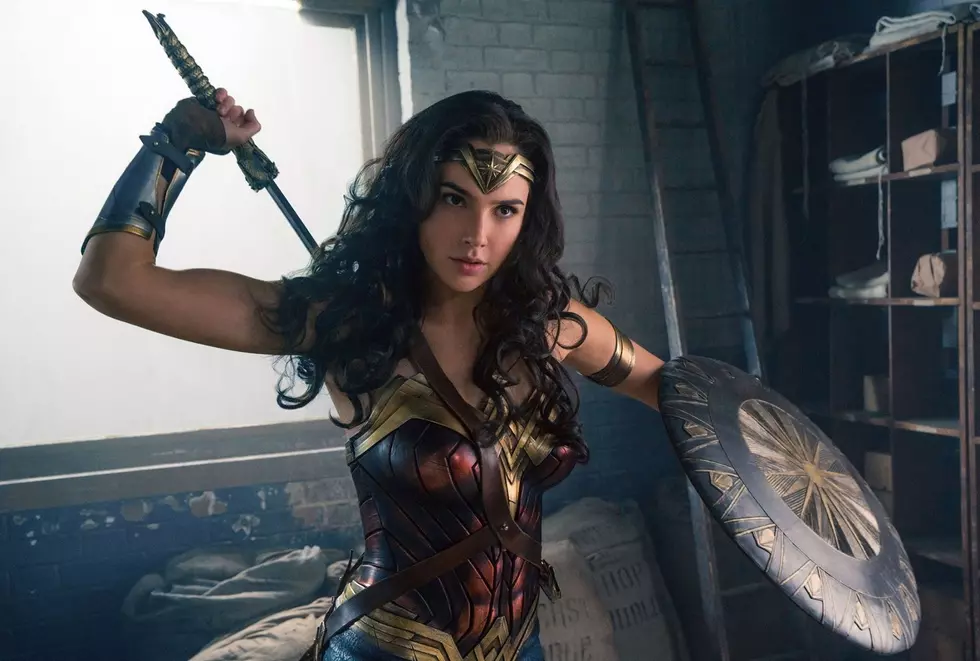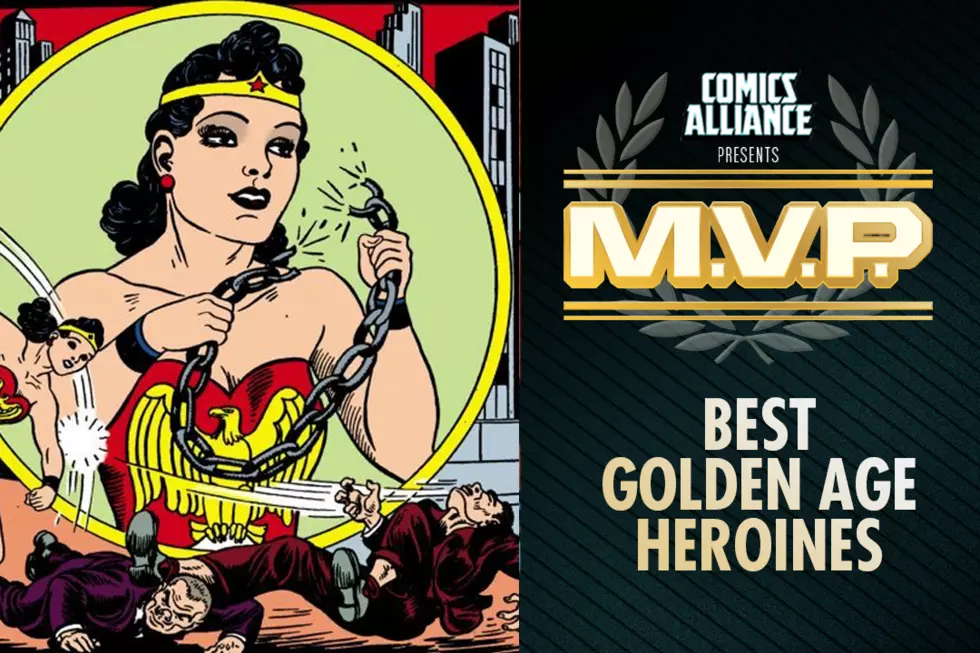![#YesHomo: Phil Jimenez On Feminine Design and Industry Change [Flame Con]](http://townsquare.media/site/622/files/2016/08/jimenez-feat.jpg?w=630&h=420&zc=1&s=0&a=t&q=89&w=980&q=75)
#YesHomo: Phil Jimenez On Feminine Design and Industry Change [Flame Con]
Phil Jimenez is an award-winning creator known for his work at both DC Comics and Marvel on such titles as Wonder Woman, Angela: Asgard's Assassin, New X-Men, The Invisibles, JLA/Titans, and countless more. He's currently working on Superwoman for DC Comics. ComicsAlliance got the chance to sit down with him at the LGBTQ comic convention Flame Con in Brooklyn last month to talk about visual design, industry change, and superheroes as drag queens.
Comics Alliance: What does it mean for you personally to be at a convention like Flame Con?
Phil Jimenez: What does it mean personally? It’s actually a layered question. I think primarily what it means to me personally is that I have been invited to participate in a kind of convention that didn’t even exist ten years ago, that people think my presence is valuable enough to help support and buttress this convention, which means I’ve said something or had enough of an impact on comics and genre culture that my name has value.
So I would I think, what it means to me personally, is that, again, that I’ve done enough to contribute to something that I think is so important.
CA: What is it like attending something that is run by and for queer creators and characters and fans?
PJ: I, personally, am just in awe. ... I am stunned that there is this collection and connection of queer creators, queer conventioneers who have assembled something that is so powerful, so effective — they’ve done it with such vigor. That all of these people suddenly now have a voice for their stories, for their art, for their writing. I think that’s amazing.
CA: As one of the first mainstream comics creators to come out in the industry, would you mind sharing how you’ve seen the industry change and grow over the past several decades?
PJ: Sure, it feels to me like — and I could be wrong — admittedly, I think, as you called me, I’m a mainstream superhero artist, right? So there were a lot of out creators, and there always have been, particularly underground and indie creators who I feel like never get enough credit. And there were also people on the periphery, like Andy Mangels, who was doing a lot for mainstream creators like myself, just by having “Gays in Comics” panels at San Diego, for example. So I was suddenly given a forum that I’m not sure I would’ve had without people like him.
As I mentioned earlier, the fact that Flame Con exists is stunning. It wouldn’t have existed ten years ago. I do believe that there are other people who don’t get the credit they deserve, for making comics generally safer for people like me. I think I was really lucky in that my sensibilities just happened to be very mainstream. It wasn’t a plan. I just happened to really like superheroes.
Also, as I babble on, I often talk about this: DC Comics, I have to give Paul Levitz and Jenette Kahn their due, and the people and the editors in that space — while some of the product they made might’ve been a little off or might not have seen queer friendly or particularly inclusive at the time — the company, the way that it was run was incredibly inclusive, and it allowed for a lot of queer people, a lot of people of color to really come into their own. I’m not really sure if we made great comics, but I’ve often said that the leadership of DC Comics in the '90s is one of the things that’s allowed for Flame Con to exist now.
CA: Do you think, in terms of support for both the stories and the creators behind the scenes, that there has been growth and improvement?
PJ: I believe there’s been growth and improvement. I think you just see it. I think it’s very easy to say, and I think it’s legitimate to critique the pace of improvement, but I feel like the sheer number of gay characters, gay coupled characters, the fact that, for example, Batwoman had her own comic ... that just would not have happened ten years ago.
I do believe there’s been an enormous amount of improvement, I think we can always improve more. I am awed by the landscape, just again, when I’m asked to be on Gays in Comics panels, when I’m doing my research, I’m always blown away at how many more gay characters there are, how many more queer characters, queer creators interested in making content — that I didn’t know about a year ago! I do believe that huge advances and strides have been made in a relatively short amount of time.
CA: In a recent interview with Graphic Policy, you talked a little bit about, as an artist, the queer visual design that you bring to a character, like Sera in Angela. Could you talk a little about — from the artist’s point of view — bringing diversity in reference to queer characters?
PJ: Part of it is when you inhabit a certain body, you’re aware of things in ways that other people are not. I think being in a queer body — it’s a male body, admittedly — navigating the world through a particular lens makes me aware of design in a way that I think other people are not — or they don’t think about it in the same way.
I think every community — people of color, other queer people, women — they design coming from a place of experience. I think I design using that experience. I think I succeed sometimes, I think I fail sometimes. Again, at the end of the day, I’m a forty-something gay guy and, you know, I like it when women wear heels, [laughs] whatever. I sort of joke about that, but my sensibilities are certainly shaped by my experiences. My hope is that I am open enough and conscious enough of other people’s experiences and feedback that I get to design characters appropriately within the milieu.
One thing that I admittedly find tricky is working with superheroes specifically, superheroes with long history; there are traditions that I don’t mind up-ending, but that I’m aware of. I’m not creating universes out of whole cloth, I’m creating universes out of which Superman and Batman exist and therefore there’s an aesthetic and sensibility I need to be aware of.
With that said, with a new generation of people, new designers, if I continue to design like they used to, I become obsolete. So it’s my job to be aware of what’s happening in design and bring that to new material.
CA: In kind of a related way, I feel that when it comes to mainstream superhero comics — maybe this is a recent or maybe this is a cyclical thing — but sometimes there’s a gravitation away from the flamboyant or the bright or the spandex of superheroes in trying to make it more gritty or more heteronormatively masculine, with bulky armor, et cetera.
PJ: Sure, sure.
CA: And I can’t help but feel like there’s definitely a degree of "take comics seriously" to it.
PJ: [Laughs] You read my mind.
CA: Yeah! And I can’t help but also feel like there’s a certain degree of "No Homo" to it, like, "Oh, these heroes, they totally aren’t gay, look how masculine and heteronormative they are!" Do you have a similar read?
PJ: Oh, yes! I hope you write "Phil nodding."
CA: Absolutely!
PJ: [Phil nods throughout the exchange.]
CA: And what do you think mainstream publishers need to do to de-center off of that very heteronormative, masculine take on heroism?
PJ: I think what you’re talking about is more complicated and complex than just a publisher choice. I think that’s rooted in worldview. And a worldview I don’t necessarily think gay people are necessarily free of, right? So "heteronormative" is layered into the culture; I think our ideas of masculine and feminine are far older than we are, obviously. And I think — god, I could talk about this for hours, I’m thinking about how I can narrow this in scope —
CA: Feel free to go on at length, I don’t want to stop you.
PJ: For example, one of the things I talk a lot about on Wonder Woman panels is the militarization of Wonder Woman. Which, in the past 20, 30 years, the character went from being ostensibly an anti-war character to a pro-war or warrior character.
I tend to think of, based on my readings — I’m not an academic — war, in and of itself, is a hyper-patriarchal, hyper-hierarchal, masculine thing, right? And so the way to make Wonder Woman saleable to men and women is to completely 180 her from her original mission and make her a warrior, because that’s "legitimizing." If she can cut something’s head off with her sword or beat the sh-- out of a man, that’s legitimizing. Whereas red and sparkly and campy is not, that’s not "legitimate."
I fight against this all the time, it makes me crazy. However, I argue that mainstream superhero comics are an intensely patriarchal, masculinized idea of what heroism is, and I find even queer people demand to see that. They shun, often, more queered, more feminized, more high camp visions of themselves or people like them in comics. They come, it’s my experience, often for a very masculine idea of heroism and fantasy.
I believe fighting that comes from both internal creative choices, but also talking about the culture and history in a much larger fashion. I believe superhero stories are not told in a vacuum, their influence impacted by history, they cannot be analyzed without contextualizing them in the time in which they were made, because those influences were writ large in them.
I think of superheroes as big drag queens, so I tend to go for the bigger, the more flamboyant, the more “out.” I think that’s really important, but there’s enormous pushback to that, both internally and I find from some fans, both super straight and sometimes really gay, who don’t want their characters overly queered.
CA: In my experience writing about this stuff, I like all these characters, but you see sometimes the reaction the people have to, say, Midnighter, where some people like him because "he’s not like 'one of those gays'."
PJ: Right!
CA: And you hear that and that’s... yikes.
PJ: As I talked to Steve Orlando about; I hated Midnighter. Midnighter’s one of my least favorite gay characters, because I think in the attempt to make him so "Not Gay," he’s "Safe Gay," because he’s like "a dude" but he takes it, you know—
CA: Like one of the guys.
PJ: — yeah, but he’s a bottom. Or whatever.
I joke about that, but Steve, actually, I think softened my position on him quite considerably by adding layers of character to him. My argument was that pre-52, the Authority were mass murderers. I don’t want a hero that’s a mass murderer. That’s not someone I want to idolize or hold up as what gay people should aspire to.
CA: In a similar vein, I started reading comics with the New 52—
PJ: Really? Wow!
CA: I was one of the people other people don’t always think exists.
PJ: I love that! No, no, that’s amazing.
CA: And I remember I was following the news and there was a character on the Teen Titans by the name of Bunker, who wears a pink-and-magenta outfit, and before anyone could even get to know him, I noticed even within queer communities online an immediate, "oh, he’s going to be like Elton John or whatever." And I understand maybe the fear of stereotyping, but to immediately dismiss solely based off of the veneer of being feminine, it was a little scary.
PJ: This is a conversation I have ad nauseam among queer fans, and so much of it is that projected fear of like — I think it’s why you have a quote-unquote heteronormative, like a "normal" dude, right?
And they’re like: I don’t want that. I don’t want that to represent me.
And the reason is: I think it’s quite frankly misogyny, and I think it’s linked to this intense fear of the feminine and being feminized. I could go on for hours. But basically: it is my experience that a lot of gay fans want gay representation in very sort of myopic, very narrow way. And I believe that’s because they’re afraid of how other people will read it, as much as [how] they will.
CA: The first issue of Superwoman laid the groundwork for a very diverse supporting cast. And I heard in the interview that I referenced earlier that Maggie Sawyer would be appearing in issue #2. Is it safe to say that queer characters will factor into Superwoman?
PJ: Absolutely. I will do everything that is humanly possible to make sure queer characters, people of color, othered characters, are a huge part of the landscape. That’s very clearly part of my agenda. How that plays out in a shared universe under editorial control — that will be something else.
One queer character that I wanted to introduce already, for story reasons, just didn’t fit, so they were pushed back to the fourth issue. I wanted them in already by issue #3, and it didn’t happen.
The only thing I often say is, within the confines of a superhero story, this stuff tends to be B- and C-level. It’s not A-level story to editors. Their A-level story is, “How did we stop the moon from colliding into Earth?” That’s their agenda, the rest of the stuff is gravy.
The editors know my work and what I bring to a story. I'm bringing an emotional center to Superwoman, and I believe the next issue is very different than the first.. There are a lot of people in the next issue, because it’s about relationship building. It’s about Maggie Sawyer and Superwoman, and then Maggie Sawyer and the Metropolis Special Crimes Unit working with super people. It’s about Steel and his niece Natasha Irons, and Lex Luthor. This is the relationship issue. Now that we’ve got the hoo-ha, the Rebirth done, we can talk about the world that she lives in beyond just herself.
Again, it’s my very clear agenda to be as diverse as possible and introduce as much of that — because that’s me as much as anything — and again, I say it with the caveat that it’s within the confines of larger superhero storytelling. So if I have a Superman crossover in issue #7 because the company makes me, then the trick I have to figure out is how much queer content can I maintain while dealing with Brainiac blotting out the sun. [laughs]
That’s always the fine line. Fortunately, I can actually draw more than most people, my stuff tends to be really dense and compact, sometimes overly so, but one of those reasons is that way I can do Brainiac blotting out the sun and have a B-plot that introduces queer politics, identity politics, women, etc.
CA: What would you like to see from the industry — however you see the industry — in terms of supporting queer creators and queer stories going forward?
PJ: I personally tend to define “queer” not simply as sexual, but as — and there’s some really interesting debates I’ve had with other queer creators about this — basically as anti-assimilationist, anti-patriarchal, anti-systemic. What I think the industry can do, I think people can support books by queer and queer-friendly creators that are good. I’m not one of those people who think we have to support everything, now especially. There’s too much good content out there.
But I think, as creators, it’s our responsibility to put out really responsible, thoughtful material — again, in mainstream superheroes within the confines of the genre. I think, the industry itself, there’s so much that needs to transform. I think it is, slowly but surely. I think as the face of the industry changes, reflecting the face of the country, we’ll see more work that is meant to cater to them.
In mainstream superhero comics, the primary audience for sixty years were white guys, right? So the fact that we even get characters that represent other people is kind of amazing, only because the world that was created was a white one, a white straight guy one. And so when stuff is interjected — there was somebody talking about this, I don’t remember who — that’s deliberate and purposeful. And you need creators and content providers who are deliberate and purposeful about changing material, literally from the ground up.
More From ComicsAlliance

